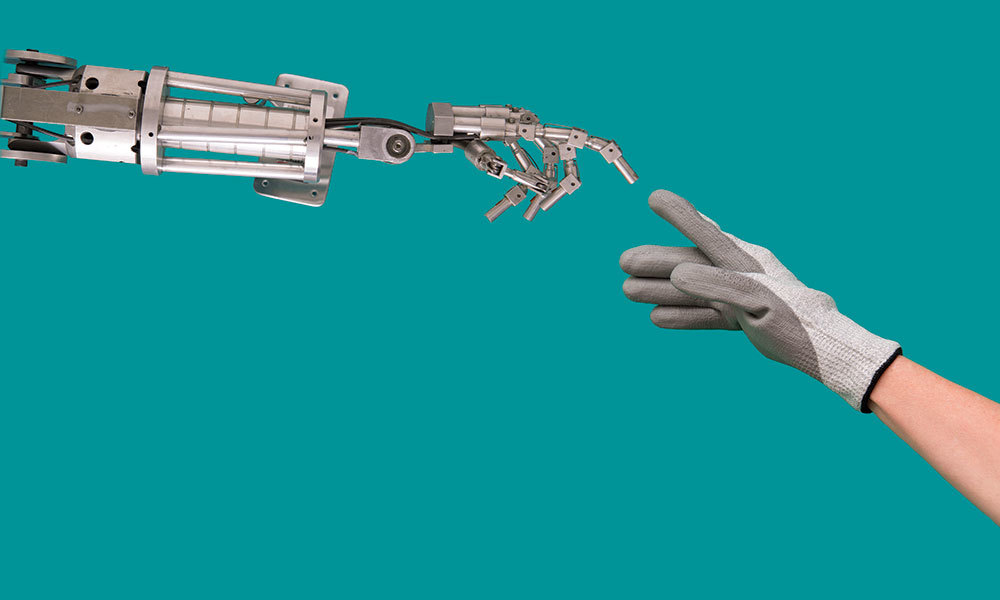
Automating Work: Changing How the Job Gets Done
The robots may not be coming for your job, but automation is already taking on tasks that were standard in job descriptions from truck driving to translation. Associations will need to help clarify what machines can and can’t do.
Dystopian movies have conditioned us to think that automation sounds the death knell for industry, if not humanity. The robots will come for our jobs—and then they’ll come for us, the story goes. Experiments with self-driving trucks have led some to suggest that the age of the long-haul trucker will soon end.
In truth, the U.S. trucking industry still faces a large, persistent, and daunting shortage of drivers—48,000, according to the American Trucking Associations. And when Ellen Voie, CAE, president and CEO of Women in Trucking (WIT), thinks about automation, she sees not impending mass unemployment but an opportunity to close that gap.
“I think we’re a long way from a truck that doesn’t have a driver in it,” she says. But newer technologies, such as cameras, sensors, and steering-assistance tools that can reduce driver error, can go a long way toward promoting the industry as a safe one for women—and WIT members say safety is their chief concern, even ahead of compensation.
“I think the fact that all these different things are being put on a semi will make it more attractive to women as well as millennials,” Voie says.
Her experience echoes the ASAE ForesightWorks research on automating work, which finds that, in the short term, automation will supplant tasks within jobs rather than eradicate them. The shifts may be sizable, though: A 2016 report from McKinsey and Co. says 60 percent of all occupations could see 30 percent or more of their activities automated using technology that’s available today.
That shift has put pressure on associations to clarify what automation can and can’t do. Walter Bacak Jr., CAE, executive director of the American Translators Association, acknowledges that some machine-translation tools like Google Translate can provide a good-enough version of an article in a foreign language. But their imprecision and lack of security make them a poor fit for the legal and government work that ATA’s members often engage in.
“You just don’t want to risk it for a contract or something that’s confidential, because information on Google Translate is not confidential,” Bacak says. “You don’t want to risk it on a marketing piece, where you have some creative word play. It’s not going to be as effective, or it may not be effective at all—or it may backfire on you.”
To pick just one example of that last case, a Taco Bell menu in Japan that used machine translation turned “cheesy fries” into the decidedly less appetizing “low-quality fleece.” ATA takes the trend seriously, though: At its most recent annual meeting in Washington, DC, the association included an advocacy day in which members made a case to Congress for the value of human translators in response to “a growing tendency in government to seek [machine translation] solutions as opposed to human translation,” according to an advocacy briefing paper ATA distributed to members.
But just as automation presents both a threat and an opportunity for the trucking industry, ATA’s membership has held steady because new technologies have created new job roles for translators. There is now a market for editing of machine translation documents: “A company has run their information through their proprietary system and so now they need a human to come through and, if you will, clean it up,” Bacak says. And the increased use of videoconferencing in courts and other institutions has allowed interpreters to do more of their work remotely.
Meanwhile, as Bacak points out, Google Translate covers only about 80 of the world’s 7,000 languages, and ATA says about 1,000 are of “significant economic importance.” In that regard, machine translation is proving the value of human translation, at least for the time being.
“Is it a concern? To some extent,” he says. “But it is not a driving force. Right now the technology has just not proven itself.”
(Ann Cutting)






Comments